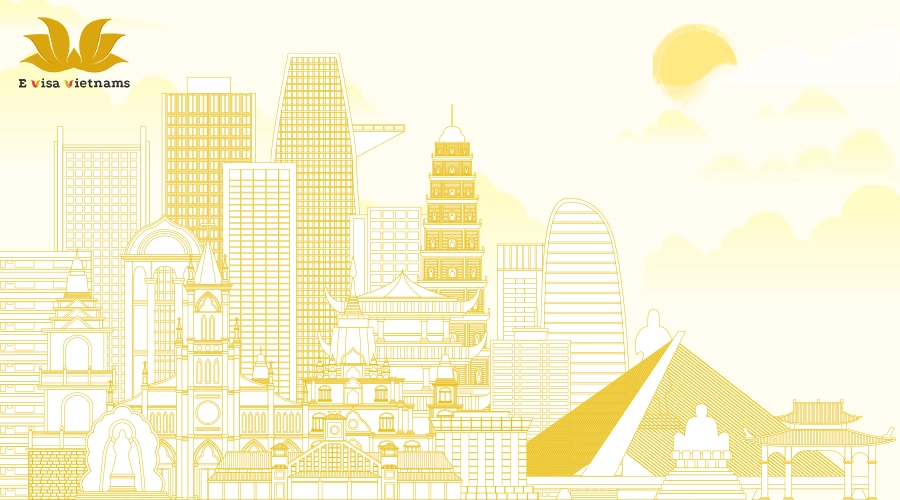vietnam dos & donts 2026 | etiquette, safety & visa tips
 Priyanshu Raghav
Priyanshu Raghav

Planning a Vietnam trip in 2026? Great choice. Vietnam blends mountain mist and beach sun, Old Quarter bustle and lantern-lit calm, street-food counters and sky bars. To keep your trip smooth, respectful, and safe, use this do’s & don’ts guide—built from real traveler pain points and local etiquette—plus a simple path to apply for your Vietnam eVisa online.
Why Etiquette Matters in Vietnam
Vietnamese culture prizes modesty, harmony, and respect—especially in homes, markets, and sacred spaces. Following local norms earns smiles, better service, and fairer prices. Ignoring them can attract scams, fines, or awkward moments.
Quick Snapshot: Vietnam Travel Basics for 2026
-
Seasons: North has 4 seasons; Central & South are more tropical.
-
Currency: Vietnamese đồng (VND); cash is king in local markets.
-
Cards & ATMs: Cards accepted in cities; ATMs widely available.
-
Plugs/Voltage: 220V/50Hz; common plugs A/C (bring a universal adapter).
-
Connectivity: Affordable local eSIM/SIM with data works best.
-
Water: Drink bottled or filtered water only.
-
Insurance: Highly recommended; covers medical care and cancellations.
Do’s: Smart, Respectful & Safe Travel Habits
Dress Codes & Temple Etiquette
-
Cover shoulders and knees for pagodas, temples, and ancestral houses.
-
Wear light, breathable clothing in cities; carry a scarf for quick cover-ups.
-
Remove hats and sunglasses inside sacred spaces; step lightly and keep voices low.
Money, Bargaining & Tipping
-
Expect to bargain at markets and with street vendors; start around 40–50% below the first quote, smile, and meet in the middle.
-
Keep small bills for taxis, snacks, and tips.
-
Tipping isn’t mandatory, but rounding up or 5–10% in restaurants is appreciated.
Health, Hydration & Food Hygiene
-
Vietnam can be hot—hydrate frequently (electrolytes help).
-
Choose busy stalls with high turnover; eat cooked-to-order.
-
Wash or sanitize hands before meals; use bottled/filtered water for brushing teeth if you have a sensitive stomach.
Getting Around: Traffic, Taxis & SIM Cards
-
Cross roads slowly and predictably; let scooters flow around you.
-
Use reputable ride-hailing/taxi apps; avoid unmetered taxis.
-
Buy a local eSIM/SIM at the airport or convenience stores for cheaper data and maps.
Photo Etiquette & Privacy
-
Ask before photographing people, workshops, and private properties.
-
Avoid military sites or any restricted signage.
-
In places like Hoi An Ancient Town, some locations may charge a fee—respect it.
Respectful Behavior in Homes & Homestays
-
Remove shoes at the entrance.
-
Accept tea or fruit with a smile and thanks; use both hands when receiving items.
-
Learn simple phrases: Xin chào (hello), Cảm ơn (thank you), Xin lỗi (sorry).
Don’ts: Common Mistakes to Avoid
Don’t Flash Valuables or Leave Bags Unattended
-
Keep phones in front pockets or cross-body; use hotel safes for passports and extra cash.
-
In crowded areas, hold your bag in front; avoid dangling backpacks behind you.
Don’t Be Loud in Sacred Spaces
-
Keep conversations soft; silence your phone.
-
Dress modestly and move clockwise around altars if locals do.
Don’t Ignore Local Laws & Entry Rules
-
Drugs and contraband carry severe penalties—zero tolerance.
-
Respect visa validity and length of stay; overstays can mean fines or bans.
-
Drones and professional filming may require permissions—check locally.
Don’t Drink Tap Water or Skip Travel Insurance
-
Stick to sealed bottles or filtered water.
-
Insurance can save thousands for emergencies or delays.
Don’t Disrespect Dining Customs
-
Don’t stick chopsticks upright in rice (resembles funeral rites).
-
Pass food with both hands or place dishes on the table for others to take.
Practical Scenarios & What to Do Instead
-
Street Crossing: Keep a steady pace; don’t dart or run.
-
Pushy Vendor: Smile, say “Không, cảm ơn” (No, thank you), and walk away.
-
Taxi Without Meter: Politely decline; order via app or find a marked, metered cab.
-
Price Confusion: Confirm total price (and currency) before ordering tours, boats, or motos.
Festival & Public Holiday Awareness 2026
-
Tet (Lunar New Year): Late Jan/Feb — magical but many shops close; book transport and hotels early.
-
Mid-Autumn Festival: September — lanterns, mooncakes, family celebrations.
-
National Day: 2 September — parades, busy travel; expect crowds in major cities.
How to Apply for a Vietnam eVisa Online (Step-by-Step)
-
Check eligibility & documents (passport valid 6+ months, clear passport photo, onward/return details).
-
Complete the secure application on our platform with accurate personal and trip info.
-
Upload your passport bio page and compliant photo.
-
Pay the fee via secure online payment.
-
Track your application with real-time updates.
-
Receive your eVisa by email (PDF). Print a copy and carry it with your passport for arrival checks.
Pro Tip: Apply at least 7–10 days before departure to avoid last-minute stress.
Call to Action: Ready to go? Apply for your Vietnam eVisa online now and get expert support from submission to approval.
Risks of Other Application Methods & Why Our Service Is Safer
-
Unverified third-party sites may charge hidden fees or mishandle your data.
-
Form errors (name order, passport number, dates) can cause rejections.
-
No tracking/support means you don’t know what went wrong—or how to fix it.
Why choose us:
-
Compliance checks before submission to reduce rejection risk.
-
24/7 human support for edits and status updates.
-
Secure payments and clear pricing—no surprises.
-
On-time delivery with proactive communication.
Conclusion & Next Steps
With these do’s & don’ts, you’ll blend into Vietnam’s rhythm, travel safer, and connect more deeply with locals. Get your paperwork squared away, plan your route, and come hungry for pho—and adventure.
Start now: Apply for your Vietnam eVisa online and travel confident in 2026.
WRITE YOUR COMMENT
Your email address will not be published. Required fields are marked *